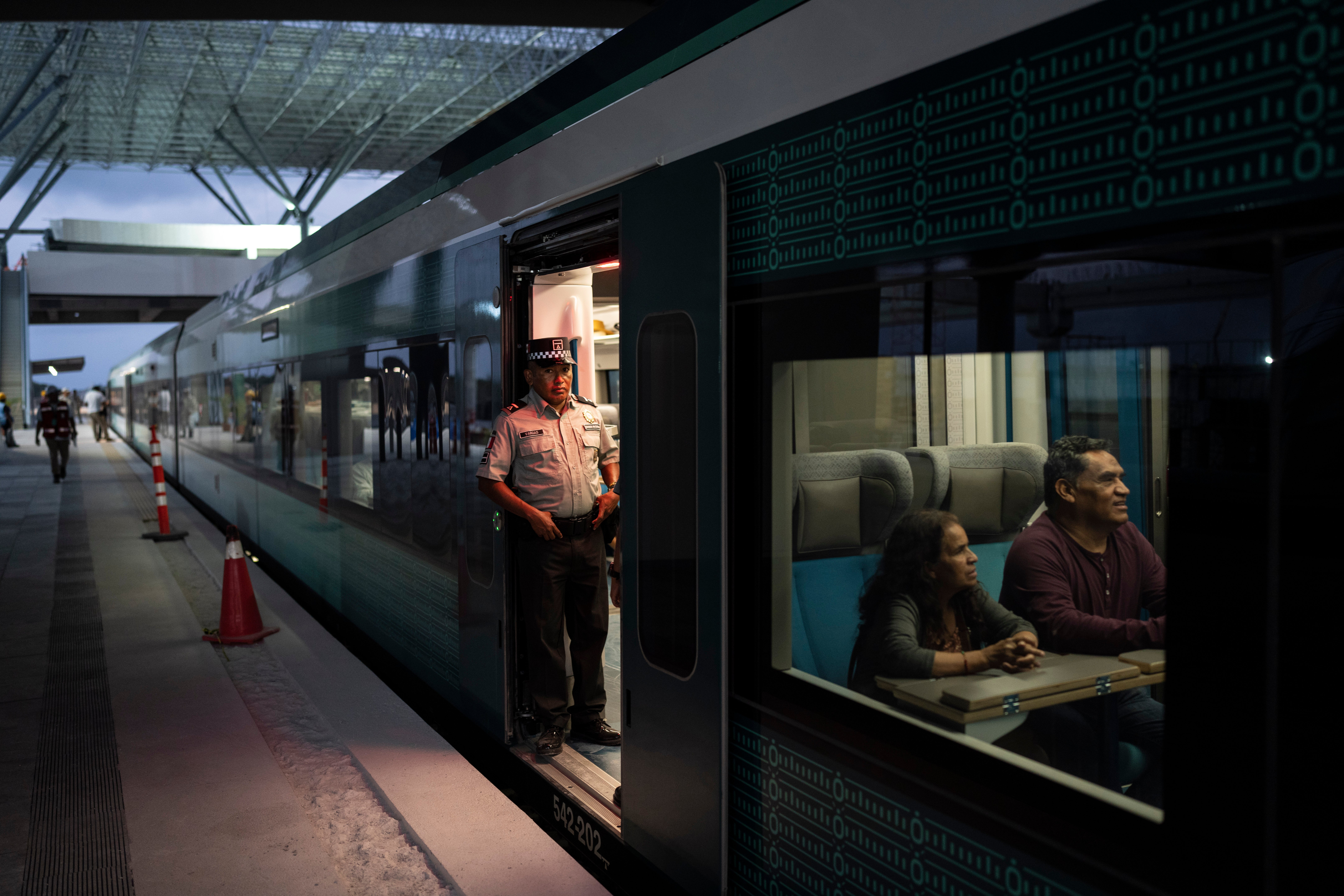Mexico's costly Maya Train draws few passengers in its first six months of partial operation
The pet rail project of President Andrés Manuel López Obrador could wind up costing as much as $30 billion

Your support helps us to tell the story
From reproductive rights to climate change to Big Tech, The Independent is on the ground when the story is developing. Whether it's investigating the financials of Elon Musk's pro-Trump PAC or producing our latest documentary, 'The A Word', which shines a light on the American women fighting for reproductive rights, we know how important it is to parse out the facts from the messaging.
At such a critical moment in US history, we need reporters on the ground. Your donation allows us to keep sending journalists to speak to both sides of the story.
The Independent is trusted by Americans across the entire political spectrum. And unlike many other quality news outlets, we choose not to lock Americans out of our reporting and analysis with paywalls. We believe quality journalism should be available to everyone, paid for by those who can afford it.
Your support makes all the difference.The pet rail project of President Andrés Manuel López Obrador could wind up costing as much as $30 billion, is only half finished as he heads into the final two months of his term, and has wreaked major damage on the environment.
But the most damning judgment on the Maya Train tourist line, which runs in a loop around the Yucatan Peninsula, are the ridership figures on about half the railway that is now open: only about 1,200 people per day use the train, according to government figures released Monday.
Most ride it only on short stretches between the city of Merida and Cancun, or the nearby city of Campeche. The big hope for paying the train’s massive cost was that tourists would use it to depart from the resort of Cancun and explore the whole 950-mile (1,500-kilometer) route to visit the Mayan archaeological sites that dot the peninsula.
But a round-trip route from Cancun to the well-known Mayan temple complex of Palenque has drawn only about 100 passengers per day each way in the first six months of operation. That is a volume that a bus or two per day could handle.
The government had originally promised the train would carry between 22,000 and 37,000 people per day. Current ridership is about 3-5% of that, with three of the four most popular stations — Cancun, Merida, Palenque and Campeche — already in service.
Admittedly, the rail line down the heavily traveled corridor linking Cancun and the resorts of Playa del Carmen and Tulum — an area known as the Riviera Maya — isn't finished yet, and only 17 trains are operating; three times as many may eventually be added.
But critics say there is little hope that the Cancun-Tulum line will make the project profitable, because it doesn't run particularly near any of the resort towns it is supposed to serve.
The Cancun-Tulum railway was originally supposed to run on an elevated line over the coastal highway, where most hotels are. But facing technical difficulties, the government changed the route by cutting a 68-mile (110-kilometer) swath through the jungle and moving the tracks about 4½ miles (7 kilometers) inland.
So instead of hopping one of the micro-buses that run constantly down the coastal highway, tourists or resort workers would have to take a taxi to the train station, wait for one of the few daily trains, and then take another taxi to the resorts once they reach their destination.
“The uselessness of this project was foreseeable,” said Jose “Pepe” Urbina, a local diver who opposes the train because its steel pilings have damaged the caverns he has explored for decades. “In reality, the train doesn't go anywhere you couldn't get to by highway before.”
“These are rail lines that don't provide any useful service for workers, for students, for any daily use,” Urbina said.
One thing the railway project did create was jobs: Manuel Merino, the governor of the Gulf coast state of Tabasco, said the Maya Train had created 20,000 direct or indirect jobs in his state and lowered the unemployment rate by 40%.
“This makes it truly a motor for developing the south,” a historically poorer and undeveloped part of Mexico, Merino said. But most of those jobs will be gone once construction is finished, and federal officials are also casting around for ways to try to make the railway pay for itself.
Officials have suggested freight trains may run on the tracks as well, but there is little industry in the region, and thus freight demand is limited.
It's not clear whether the government ever thought the railway would be profitable. López Obrador had already decided to build it before feasibility studies were carried out. According to a 2019 government study, the railway was going to cost $8.5 billion, and the estimated benefits would be about $10.5 billion.
But those “estimated benefits” always included a lot of intangibles, like reduced traffic on highways, quicker travel or increased tourism revenues, all of which either didn't happen or were unrelated to the train.
Moody’s Analytics Director Alfredo Coutiño noted that cost overruns are common on such projects.
“As was expected, the Maya Train project was not finished as planned and the cost was much higher than the original budget,” Coutiño wrote.
“The question that still must be resolved is if this project will be profitable in the medium term when it is expected to be fully functional, operating at full capacity and managed as a government concern and not as a private enterprise.”